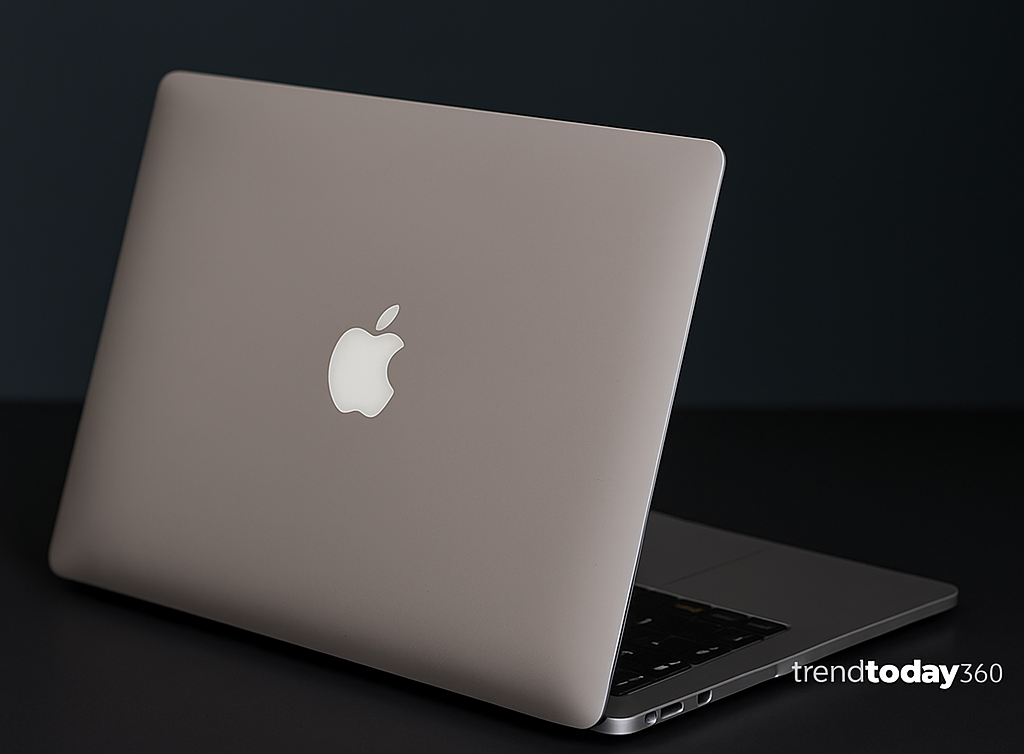Apple Mac ad controversy usually nails its marketing — memorable visuals, sleek messaging, and ads that make you want to buy something you didn’t think you needed. But this time, the tech giant stumbled.
In a rare misfire, Apple Mac ad controversy quietly pulled its latest long-form YouTube ad titled “Convince Your Parents to Get You a Mac” within 24 hours of its release. The video, featuring SNL’s Please Don’t Destroy star Martin Herlihy, tried too hard to be quirky — and failed to land.
Honestly, the decision to remove it was not only understandable but the right call. Let’s break down what went wrong and what it says about Apple’s strategy.
Trying Too Hard to Be Relatable Apple Mac ad controversy
The ad’s setup was simple. A high school or college pep rally, an awkward presenter, and a desperate mission — persuade skeptical parents to splurge on a MacBook for their child’s studies.
While it sounded clever in theory, the execution felt anything but. From the start, the jokes felt forced. Herlihy, a talented comedian in the right setting, seemed to be grasping for laughs in a room full of unimpressed extras.
Instead of feeling relatable or funny, the video gave off cringe energy — the kind that makes you instinctively reach for the “skip” button. It lasted nearly eight minutes, but most viewers probably didn’t make it past the first one.
A Long Ad with a Short Lifespan
Apple likely envisioned this as a playful way to showcase the MacBook’s value. The comparison between a budget Windows laptop and a base MacBook Air is valid. A $450 machine won’t offer the same performance, design, or longevity as a $999 Mac.
Still, that message got buried under awkward pacing, odd humor, and a setting that didn’t resonate with Apple’s usual cool, clean image. Instead of highlighting real benefits, the ad turned into a different skit that lacked focus.
In an era dominated by short-form content, this overly long ad was out of touch. TikTok-style edits or snappy reels often perform better, mainly with younger audiences. Apple’s attempt to stretch out a joke over eight minutes just didn’t work.
Teens Can Sell It Better Themselves
If there’s one thing Apple should learn from this Apple Mac ad controversy, it’s this — teens don’t need a scripted skit to make their case.
On platforms like TikTok, students already share real, authentic content showing why they love their Macs. They highlight how macOS helps with video editing, note-taking, creative design, and innovativeness— all in under 60 seconds and with authentic eagerness.
Instead of trying to manufacture that voice, Apple could amplify it. Real users speaking authentically often connect better than even the most polished scripts.
Pulling the Plug: A Smart Move for Apple Mac ad controversy
To Apple’s credit, it didn’t double down. Within a day, the ad was set to private on YouTube. That tells us someone at Apple — maybe even Tim Cook himself — recognized the mistake and acted quickly.
That doesn’t mean the entire campaign was a loss. Some of the information presented — like the value proposition and MacBook longevity — still matters. Apple just needs to find a better way to communicate that message.
This isn’t Apple’s first stumble in recent memory. Their recent “Crush” ad, which showed imaginative tools being break by an industrial press, also received backlash. These missteps recollect us that even the most powerful brands can lose touch with their audience if they don’t adapt.
Final Thoughts: Back to What Apple Does Best
Apple’s marketing usually leads the tech world. From the classic iPod silhouette ads to the iconic “Get a Mac” series, they’ve built a brand on clever, stylish storytelling.
That’s why the Apple Mac ad controversy stood out so much — it wasn’t just bad, it wasn’t Apple. By pulling the ad, the company shield its brand identity and proved it still knows when to admit an error.
Moving forward, expect Apple to bounce back with tighter, smarter campaigns — maybe something TikTok-friendly, fun, and short.
Let’s hope the next one feels less like a classroom skit and more like the Apple we know: bold, polished, and a little bit magical.
Update By TrendToday360







Leave a Reply